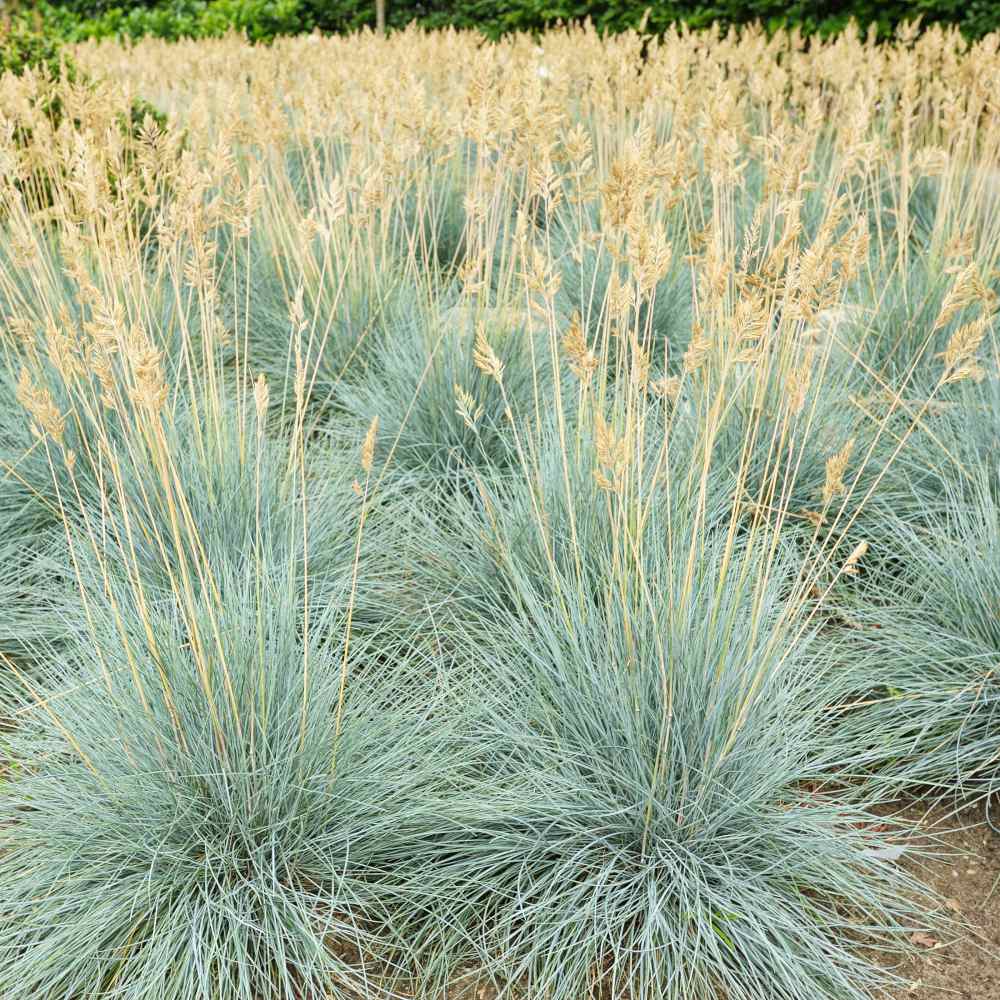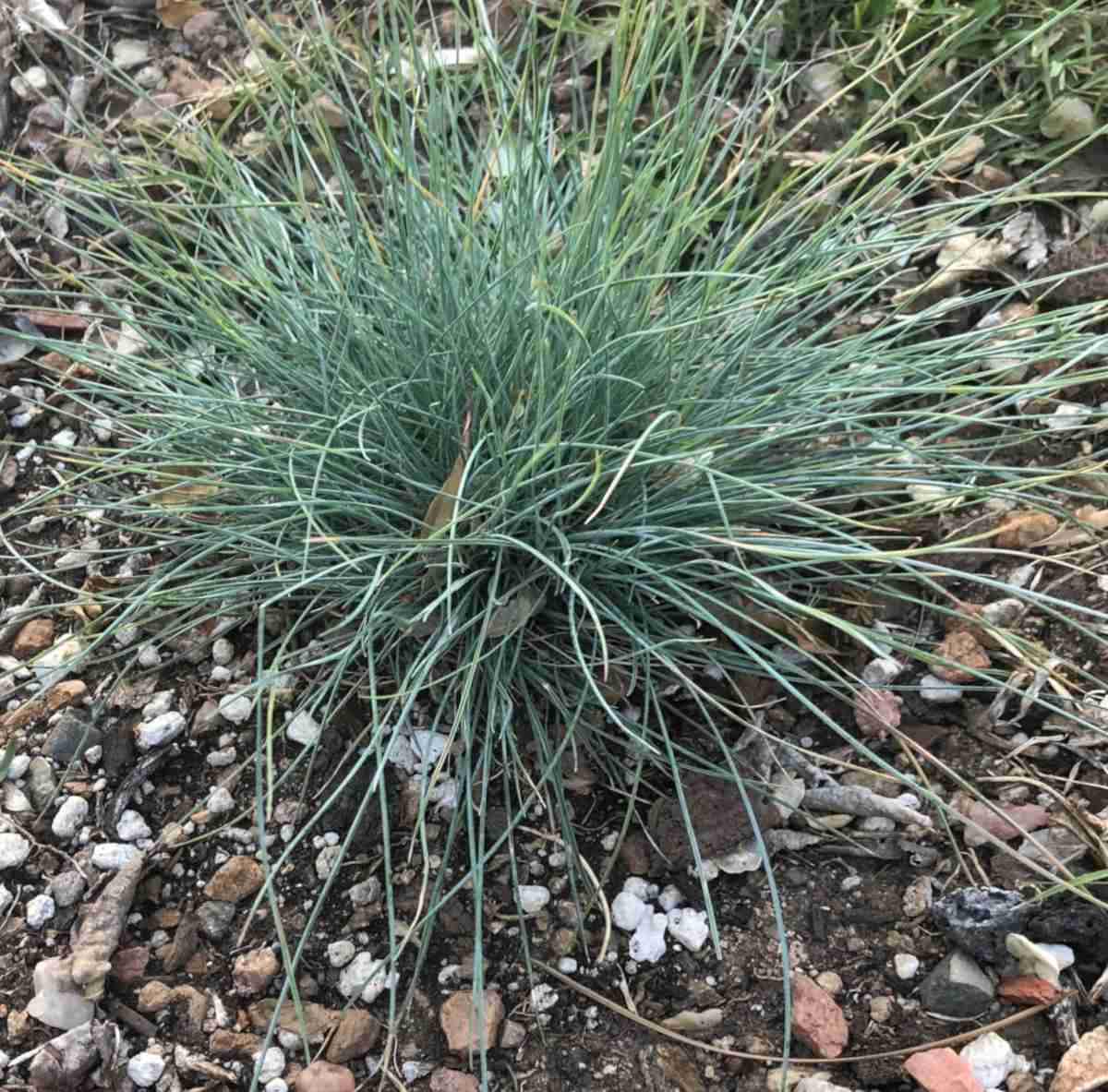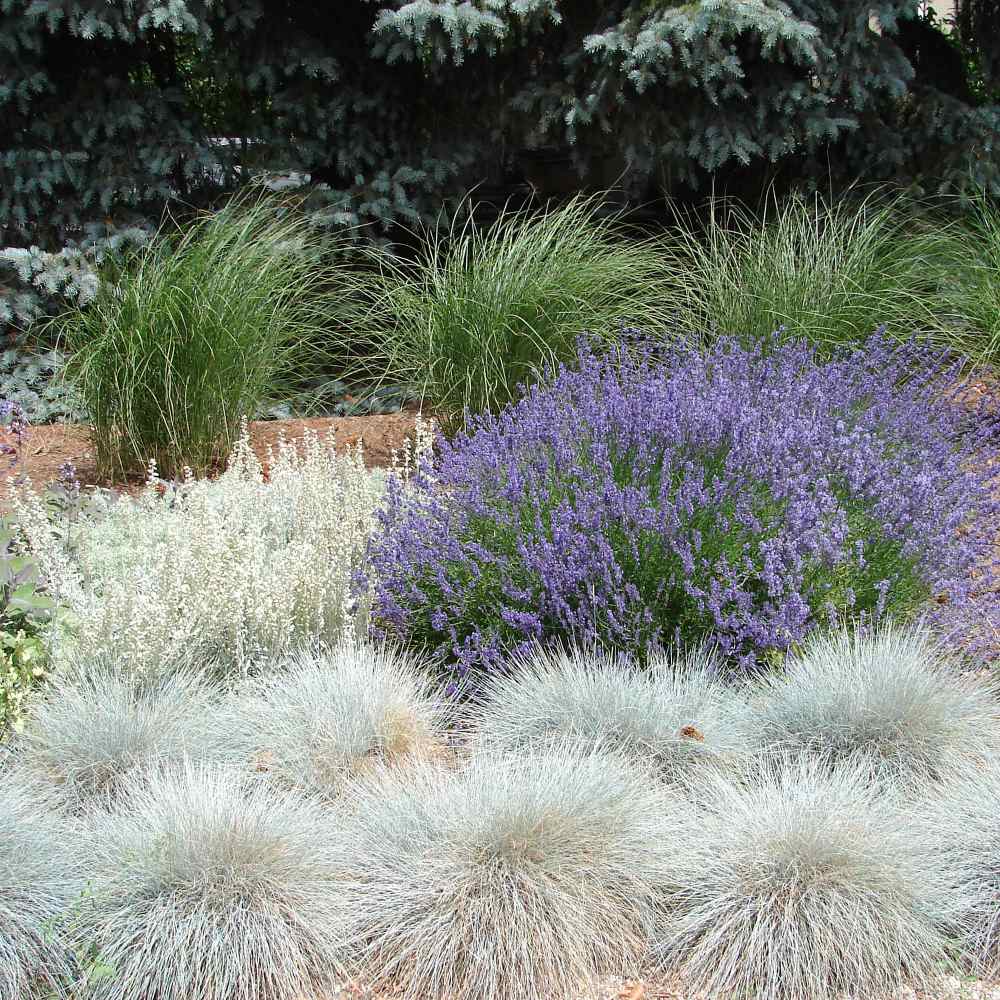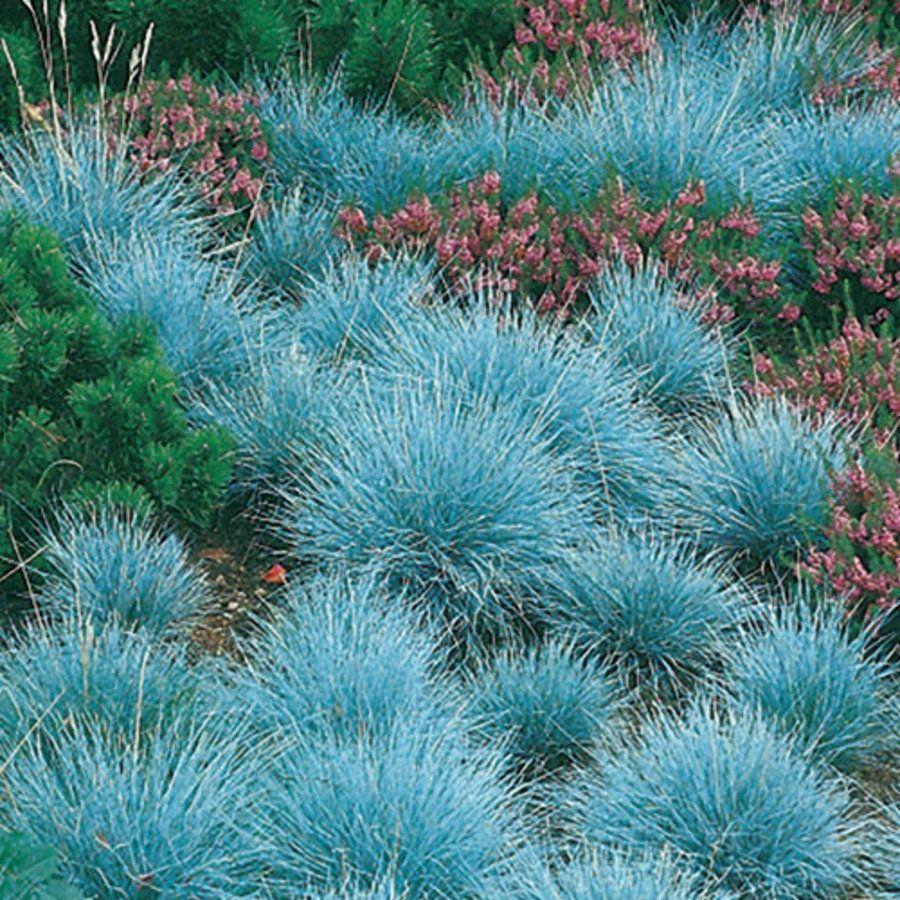Blue Fescue from Seed Progress Photos [Backyard Neophyte Landscaping Blog]
It is an excellent plant for borders and edging. This ornamental grass is perfect for ground cover, rock gardens, cottage gardens, and city gardens when grown in a mass planting. Blue Fescue also looks great when grown in containers. Blue Fescue is a sun-loving plant. This perennial grass thrives when it grows in full sun.

Blue Fescue Seed Festuca Cinerea Ornamental Grass Seeds
Deer resistant! A great candidate for borders, edging, mass planting as a ground cover , rock gardens, cottage gardens, city gardens, or containers. This plant often looks best if the flowers are sheared off. Short-lived, Blue Fescue tends to die out in the center after 2-4 years.

Blue Fescue Guide How to Grow & Care for "Festuca Glauca"
When planting blue fescue, dig a hole that is slightly larger than the root ball. Gently remove the plant from its container and loosen the roots. Place the plant in the hole and backfill with soil, firming it around the base of the plant. Water the plant well after planting and keep it consistently moist but not overly wet.
/blue-fescue-big-56a5857d5f9b58b7d0dd425e.jpg)
How to Grow and Care for Blue Fescue Grass
Distinguishing traits. Blue fescue is relatively compact, forming a dense, rounded mound of blue-gray foliage. I like to think of blue fescue as modular — it looks great as a single specimen or massed in a field.

Festuca 'Elijah Blue' Fescue Grass 6" Pot Hello Hello Plants & Garden Supplies
Blue fescue is a small ornamental grass that grows as a perennial in Zones 4-8, where it brings vibrant blue color to garden beds and borders. It doesn't go dormant, so it is suitable anywhere the home gardener wants winter color in all but the most frigid areas.

Blue fescue care, pruning for Festuca glauca, best mulch
1. Remove the plant from the ground with a shovel or pickax 2. Cut the clamp in two and discard the brown parts. 3. Replant the clamps after these procedures. Each clamp should be spaced about 6-8 inches apart. 4. Give sufficient water to moisten the soil. 5.

Blue Fescue Grass perennial plants perennial grasses live in 2020 Blue fescue, Perennial
Tear each clump in half, and then break off divisions (about 2 to 3 inches across) for replanting. Place them in the garden bed 8 to 10 inches apart, and water them immediately. Fescues grow best in soil that's very well-drained. A layer of fine gravel is an excellent mulch; organic mulches keep the soil too damp.
:max_bytes(150000):strip_icc()/blue-fescue-grass-2132481-01-f50efca6bf8242a2a33fc51aa73824db.jpg)
Blue Fescue Grass Plant Care & Growing Guide
Fast growing, dense foliage mound; reaches 8 to 12 in. tall and wide. Blue Fescue is the best small ornamental grass. Its silver-blue coloring and fine texture is appreciated in both Asian gardens and the drought-resistant landscape. Most often planted near rock gardens, around landscape boulders and in dry streambeds.

Blue Fescue Seed Festuca Cinerea Ornamental Grass Seeds
Blue Fescue (Festuca glauca) is a powder-blue low maintenance ornamental grass. It is best to plant Blue Fescue early in the spring but can be planted later in the summer as well.

BLUE FESCUE FESTUCA GLAUCA / Flower / Fescue / PremierSeedsDirect
Contents 0.1 Principal Conclusions: 1 Understanding Blue Fescue Grass 1.1 Growing Blue Fescue Grass 2 Selecting the Right Location for Blue Fescue Grass 2.1 Environmental Factors 2.2 Planting in Containers 3 Preparing the Soil for Planting Blue Fescue Grass 3.1 Soil Testing 3.2 Amending the Soil 3.3 Leveling the Soil

Elijah Blue Fescue Plant Guide
Contents hide 1 What is blue fescue? 2 Where to Plant Blue Fescue? 3 How and When to Plant Blue Fescue? 4 Blue Fescue Care Tips 5 Pests and Problems 6 How to Propagate Blue Fescue? 7 Frequently Asked Questions 7.1 How to change the color of blue fescue? 7.2 How to preserve the color of blue fescue? 7.3 How to dye blue fescue? What is blue fescue?

BLUE FESCUE,Ornamental Grass Seeds Festuca glauca PerennialSPacket100 Seeds Modern
Blue fescue ( Festuca ovina glauca ), also commonly called sheep fescue and sometimes mistakenly classified as F. cinerea, is a small semi-evergreen grass native to Europe. Grown as an ornamental for its attractive foliage color, it is hardy in zones 4-8. Fescues are cool season grasses so they look their best in spring and fall.

Growing Blue Fescue Plants Planting And Care Of Blue Fescue Grass
Blue fescue grass ( Festuca glauca) is a colorful ornamental grass with silvery blue foliage and pale green flowers that turn buff-colored as they mature. It is drought tolerant and grows in USDA plant hardiness zones 4 to 8.

Lot of 3 Elijah Blue Fescue Festuca glauca 'Elijah Etsy in 2021 Grasses landscaping, Blue
Noteworthy Characteristics. Festuca glauca, commonly called blue fescue, is a short-lived, low-growing, semi-evergreen, clump-forming ornamental grass noted for its glaucous, finely-textured, blue-gray foliage.Foliage forms a dome-shaped, porcupine-like tuft of erect to arching, needle-like blades radiating upward and outward to a height of 6-8" (inflorescences typically bring total clump.
/blue-fescue-grass-2132481-05-9e82a0b94a9b46eaa2703f3bfbbb5fbb.jpg)
How to Grow and Care for Blue Fescue Grass
Blue fescue is a short lived, low growing, mounded, cool season grass grown for its compact size and blue foliage. It is a non-native, clumping grass. The blue coloration can vary, so it is best to buy named cultivars for uniformity of color.

Blue Fescue ‘Elijah Blue’ Plant Profile Sylvan Gardens Landscape Contractors
Full sun. Frost tolerant Established plants of blue fescue are winter hardy to -30°F (-34°C). Feeding None needed. Spacing Single Plants: 7" (20cm) each way (minimum) Rows: 7" (20cm) with 7" (20cm) row gap (minimum) Sow and Plant Variations in foliage color occur when blue fescue is grown from seed, but not when plants are vegetatively propagated.